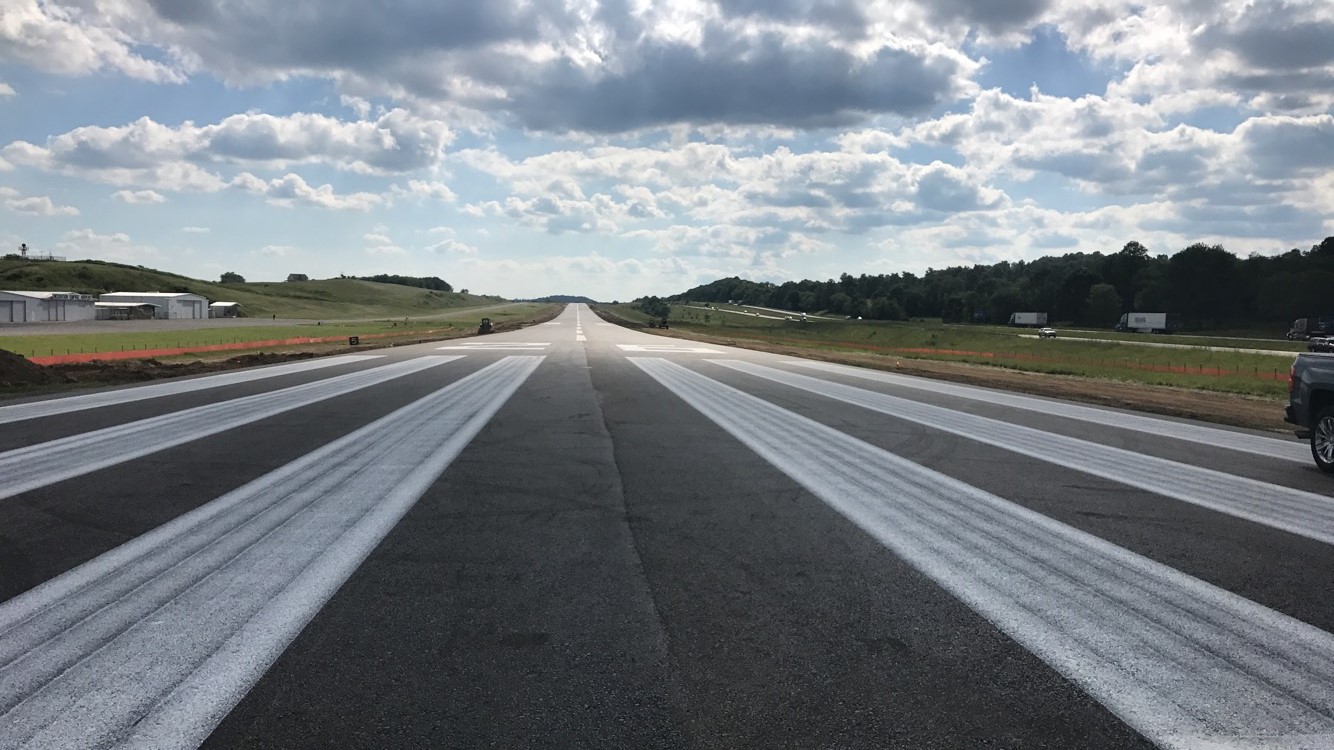As Runway 8-26 at Mountain Empire Airport was last overlaid in 1992, an overlay had been included in the Airport’s Capital Improvement Program (CIP) for 2022. While the Airport had been completing preventative maintenance such as crack sealing, the noted age-related distresses of block cracking, raveling, and stripping were becoming more prevalent and extensive in the 5,252-foot runway. Additionally, the runway’s Pavement Condition Index (PCI), which was currently in the Fair/Good category, was forecasted to be in the range of 30-48 (Poor/Fair) by 2018.
Given the increased cracking and forecasted PCI, there was concern the pavement would not maintain in a useable condition until the planned rehabilitation in 2022, at which time the pavement would be 30 years old. Since the pavement would be nearing the point where full reconstruction would be required in lieu of a typical pavement overlay, it was recommended to advance the pavement rehabilitation in the Airport’s CIP. To aid in the priority ranking of the project, the non-critical runway lighting element of the original CIP request was deferred.
As the first step in the project, non-primary entitlement funds were utilized to complete a schematic design phase. In addition to completing the required surveys and geotechnical investigation for the final design, the schematic design would serve to identify the outstanding issues and propose options for the rehabilitation.
After review of multiple options, including a nominal overlay and a variable depth grade correcting overlay, and consideration of all factors, the variable depth overlay was selected for the final design. The final design included the placement of 13,000 tons of P-401 bituminous surface course to correct the non-standard longitudinal and transverse grades. To help alleviate reflective cracking, 44,000 square yards of asphalt overlay fabric was installed prior to placement of the overlay. As runway 8-26 is used by jet aircraft, the grooving of the pavement was also proposed. The project was also designed with a lesser alternate for the most critical portion of the rehabilitation in the event funding was not available for the full project.
Ultimately funding was secured for the project and the full alternate was awarded. The construction was completed in July 2017 and was completed within the construction budget.


